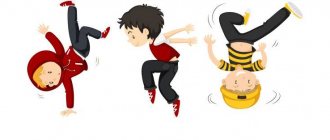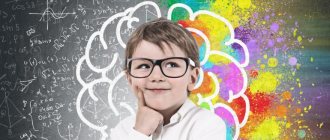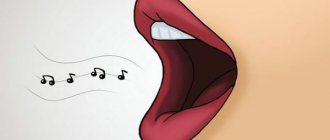To ensure that memory and thinking do not weaken, they need training. For good brain training, it is not the complexity that is important, but the variety of tasks - the more unusual the experience, the more flexible it becomes. We have selected 10 exercises that strengthen memory, improve alertness, increase concentration and productivity.
Working out doesn't have to be a grueling test of endurance. It is important not to overload yourself so as not to get a negative result. Exercise two to three times a day for 15-20 minutes, alternating methods.
Use your non-dominant hand (right-handed - left, left-handed - right)
Brush your teeth, type on your smartphone, or take your wallet out of your pocket with the wrong hand.
A separate exercise will be to look for options where you can apply this practice: holding a spoon or fork in your hand, fastening buttons or typing a code on an intercom.
How it works: the brain will have to use those parts of the motor cortex that were previously “asleep”. This will increase mental and motor tone.
Wednesday measure your IQ
Let intelligence tests to assess IQ become a brain simulator on Wednesday. After all, they can be performed not only to measure the level of your mental development and IQ, but also for the purpose of intellectual training.
But these tests are usually solved within a given time. Therefore, first you need to see how much time you are allocated to solve the battery of proposed problems. Then note the time and begin the test.
By the way, by noting time, you thereby set yourself a certain bar for the future. Keep a record of the time you completed so that next time you can compare the old results with the new ones and track your progress.
Get a new experience
Try blindfolding and walking around the apartment, taking a shower or vacuuming the room. Such an experiment deprives one of the main senses - vision. You will have to remember the location of objects and the actions performed with them earlier. This trains the ability to retrieve already acquired information and spatial memory.
Put yourself in unfamiliar situations and try to learn new things regularly. Master the Braille system (a font for the visually impaired), learn to juggle, walk on your hands, or simply solve puzzles.
How it works: low-active areas of the brain begin to work, unused neural connections are restored. The mind remains constantly “warmed up”. As a result, you “turn on” faster, unusual thoughts and extraordinary solutions appear.
How to keep a clear mind
Neurobics is a brain exercise that makes it possible to develop mental abilities and maintain a clear mind for a long time.
If the brain is not developed, then it slowly begins to degrade. The fundamentals of neuroscience were developed by Professor Lawrence Katz. American scientists have conducted studies that refute the claim that nerve cells die and are no longer restored.
Lawrence Katz, along with other scientists, proved that dendrites are depleted in humans.
Dendrites are processes of nerve cells that receive impulses from neurons.
If these processes become depleted, the nerve endings lose their ability to conduct nerve signals. As a result of this process, a decrease in a person’s mental abilities appears.
To maintain dendrites in working condition, it is necessary to perform exercises that will keep brain cells in good shape.
When exercising, neurons begin to grow new processes, thereby developing the neural network of the brain. This can happen at any age. A person’s task is to help them develop.
If a person does not want to think, but is looking for ready-made solutions, then the cells seem to freeze. Neuroscience is ready to awaken your thoughts and help you improve.
This gymnastics is not boring, even fun. She is able to paint your everyday life with new colors.
By performing ordinary, often boring actions in a new way, you will involve different senses in the training so much that the brain will begin to produce new nerve cells.
Brain training does not require any special preparation from you. You can even exercise while walking or during dinner. Once you become familiar with the principles of neurobics, you will be able to create a training program yourself using “neural practices” for the brain.
Neurobics makes it possible to engage different senses. Having involved 2 organs, one will have to perform the usual actions, and the other will have to perform a new “reading”.
In neurobics, you can perform several actions at once: combing your hair, brushing your teeth, putting on clothes, closing your eyes. You can walk down the street while simultaneously counting how many people have passed you wearing blue clothes.
Go to work/school/meeting friends along an unfamiliar route
It is not necessary to make this exercise a topographic test. Walk from the public transport stop to the office along a parallel street. You won't get lost, but everything around you will be new. The brain will not miss the latest information - it will definitely turn on.
How it works: The principles from the previous exercises apply. On an unfamiliar route, the brain is forced to control the path in order to avoid mistakes - this trains concentration and speed of analysis of external conditions. This practice also increases the hippocampus. This is one of the key structures needed for memorization. People with a weak hippocampus remember long-learned information, but have difficulty retaining new information.
Types of intelligence
There are many different classifications of intelligence. The most famous one belongs to the American psychologist Howard Gardner. He identified 8 types of intelligence:
- spatial,
- bodily-kinesthetic,
- musical,
- linguistic,
- logical-mathematical,
- interpersonal,
- intrapersonal,
- naturalistic.
According to Gardner's theory, everyone has a dominant intelligence that determines what a person can be successful at. Based on this, standard IQ tests are untenable, since they only measure the level of logical-mathematical intelligence.
Another classification divides intelligence into 4 components:
- Mental intelligence is responsible for rational thinking. It is applicable wherever the laws of logic apply.
- Physical or bodily intelligence controls processes associated with controlling the body.
- Emotional intelligence deals with emotions and interpersonal interactions.
- Spiritual intelligence is associated with the subconscious, intuition, and ethical categories.
All components of intelligence require development. If you pay attention to only one thing, you will not achieve harmony. Some important areas of life will be limping.
Answer common questions creatively
“How are you?”, “What’s new?”, “How was your weekend?” — we answer such questions not always in the same way, but, as a rule, in a rather formulaic manner. Instead, start thinking of interesting phrases to answer. This approach will develop creative thinking and add variety to routine conversations. A new joke (even if it’s not explosive), an old joke, an entertaining story, an original play on words - all this will make the day better. Prepare in advance.
How it works: the exercise pulls the brain out of “autopilot” mode and activates the rational and creative departments. Trains brainstorming skills and searching for non-standard solutions.
Remember the words
Mind training tasks can be performed not only by adults, but also by children. The activity is often used in schools and kindergartens. The goal is to remember as many words as possible in the correct sequence and then reproduce them from memory.
Let's say: sun, sky, sakura, grass, blue, blooms, nature, happy, sea, constellation, sand, excitement, hot, coconut, elephant.
Initially, the exercise resembles memorizing a poem, but differs from it in that it does not have a semantic sequence; accordingly, it will be quite difficult to remember such a set of words and then reproduce it from memory.
Read colorful text
Look at the picture. Words denoting colors are written in different colors. Try looking at a word to pronounce not the word itself, but the color in which it is written. This is not easy, because we have different hemispheres responsible for the perception of colors and words. This exercise weans the brain from working superficially. Forces him to process all the information based on data from different departments.
How it works: The exercise forces the hemispheres to work together and creates new neural connections. Practice on different pictures. You can compose them yourself or find them on the Internet. It is considered a good prevention of Alzheimer's disease.
What is intelligence
The concept of “intelligence” is heard by everyone, but few understand what it really means. General erudition, the ability to think logically or solve mathematical problems are often mistaken for intelligence. In fact, the concept of “intelligence” is much broader.
Intelligence is a mental function responsible for a person’s adaptation to the world around him. It consists of several components that form a single complex system.
It is the development of intelligence that determines how successful a person will be in life. You can be a walking encyclopedia, but be completely unable to apply your knowledge in practice. But with average abilities you can achieve simply incredible results.
More than 100 cool lessons, tests and exercises for brain development
Start developing
Intelligence is closely related to cognitive functions - perception, attention, thinking, speech. With the help of them, he receives “food”, which he subsequently processes and uses to build effective strategies and implement them.
According to recent studies, 50% of human intelligence is determined by genes. This means that we have the second 50% that we can actively influence. Our task is to get the maximum out of them. And for this you need to constantly develop. Anyone who firmly grasps this truth now, in a year will be able to achieve such intellectual heights that he has never even dreamed of.
Look for numbers using the Schulte table
The Schulte table is a table of numbers or letters. The task is to look for a symbol on the field from low to high. In the complicated version, the matrix cells have different colors, sizes and shapes.
During the exercise, you need to look at the center of the picture, and not move your eyes to where the desired symbol is located. So, the exercise will best develop peripheral vision and attentiveness. Ready-made tables are available on the intellectual development portal Sepia.ru.
How it works: joint mental and visual activity is trained. Making decisions under time pressure (limited time), attentiveness. This has nothing to do with memorization, but it does help you think faster. A person begins to more effectively assimilate external data and compare them with what is in memory.
Remembering objects
Training the mind and developing memory involves regularly performing the necessary exercises. The activity that we will now consider can be performed anywhere and at a time convenient for you. Try to remember a few objects that surround you now.
Your task is to pay attention to all the smallest details, and then reproduce all the information in memory. Try to accurately describe the items you reviewed (color, size, texture, if there are any chips, cracks or scuffs, etc.). Gradually the training will have to become more difficult. To do this, it will be necessary to select a larger number of objects or complex figures and elements.
Use your hands at the same time, but in different ways
Try simultaneously drawing a triangle with your left hand and a circle with your right. If you are not ambidextrous (a person who is good with both hands) this will be difficult. But over time, you will begin to cope better.
Asymmetric exercises for the mind are easy to come up with on your own. Here are some options:
- Show the “okay” gesture with your left hand, and “peace” with your right hand (Churchill’s signature two fingers). Count to five and at the same time change: “peace” to the left, “okay” to the right.
- With one hand, stroke your head in a circular motion, and with the other, swing it up and down, as if you were dunking a basketball.
- Stretch one arm forward, bend the other at the elbow and raise your thumb (as if you were giving a like). Count to five, change.
How it works: The exercise engages both hemispheres and triggers the creation of new neural circuits. This will increase multitasking and simplify the search for solutions in practice.
Neuroscience has taken over the world
Neuropsychologist Svetlana Novikova has prepared 10 exercises that many consider a magic wand. They will help develop attention, memory, speech, and increase self-control.
SIP of water
Charging your brain starts with a glass of water. Our thinking organ needs water to transmit nerve impulses. His reaction slows down if a person drinks little water.
Steps in place
Next comes the activation of the thinking organ for logical thinking and counting. Start walking in place, raising your knees high. At the same time, pull your elbow towards your knee. Walk quickly at first and then slow down.
Elbow to knee
Stand up straight. Pull the opposite shoulder towards the knee, first quickly, then slowly. The slower the movement, the better the head thinks.
Lazy Eights
Bend your arm at the elbow, put it forward, keep your thumb at eye level. Move your finger to draw a figure eight, starting from the center of your field of view. The finger goes up, then counterclockwise down and back to the center. Then do the same, but clockwise. Do it 3 times.
After this, clasp your hands and raise your thumbs up. Draw a figure eight with both hands.
Belly breathing
Breathing from the belly will help fill the brain with oxygen. Place your hand on your stomach. Exhale the air in short exhalations. Next comes a deep breath. When you exhale again, bend your back so that air flows into the lungs.
Funny monkeys
If your child doesn't read or write well, do this exercise. With your left hand, grab the tip of your nose, and with your right hand, grab the ear on the opposite side. Now we change hands by clapping our hands.
Crab
The child, leaning on his arms and legs, stands on the floor. Then he walks on all fours in different directions, like a crab.
Owl
The owl exercise will relieve tension in the neck and shoulder muscles. You need to grab and then tightly squeeze the muscles of the right shoulder with your left hand. Turn your head, look back over your shoulder.
Do it with the other hand. Taking a deep breath, roll your shoulders. Lower your chin to your chest. Then take a deep breath, relaxing your muscles.
Fist-rib-palm
Lower onto the table in turn: fist-rib-palm.
Glider
Sit with your legs crossed at the ankles. Bend forward. Slowly lower your arms down and exhale. Straighten up, raise your arms - inhale. You can lean in different directions, simulating the flight of a glider.
Do the moves with your child before school. You will be surprised by the effect of simple charging.
Connect words
Take a few words from a book or magazine, or better yet from different sources. Make a meaningful sentence or short story out of them. This technique will teach you to look for connections between things that initially seem far from each other.
How it works: the left (creative) hemisphere is trained, the ability to search for non-obvious connections and unusual solutions develops. This is almost a mandatory exercise for people whose specialty requires creativity.
What intellectual abilities does a schoolchild need?
From elementary school, boys and girls urgently need to develop critical and logical thinking (detailed information with a specific solution is in this article).
At the age of 6-10 years, a person’s mentality is formed - analytical, visual-figurative or mixed.
Already in elementary school, children should actively develop:
- working memory (the ability to hold several intermediate facts, decisions, conclusions in the head);
- skills of ordering thoughts in judgments, striving to build the correct architecture of thinking;
- the ability to draw conclusions from the received arrays of information;
- Gradually increase the speed of performing analytical and other operations.
To better understand how to develop intelligence in a child, how to be able to help him improve his mental abilities, you need to remember:
- only comprehensive work on increasing intellectual abilities in primary school age (logic, creativity, erudition, emotional, social and practical intelligence) forms a successful personality;
- a pronounced tendency towards analytical thinking does not cancel creative impulses, they only “hide” behind logic, but they can and should be developed in order to raise a harmonious personality;
- It is necessary to increase intellectual abilities not only at the computer, but also through sports: the undisputed leaders are chess, karate; Any team sports, general physical training and athletics are also useful.
Exercises for developing the abilities of younger schoolchildren
In the first grades, children do not yet learn mathematics; they are just beginning to be introduced to the course of arithmetic. However, it is already possible to solve simple mathematical puzzles, problems searching for patterns and other logic tasks with them.
Arithmetic puzzle from the LogicLike course
Such exercises are both an excellent training for the child’s thinking and reasoning skills, and a pleasant preparation for parents to do homework together.
Effective methods and ways to develop intellectual abilities at primary school age will be the same exercises that are recommended for younger children (see the material “Tasks and exercises for preparing for school”).
Period from seven to ten years
– the most intensive in terms of intellectual development. At this time, nature itself helps: the child’s sense of competition intensifies and voluntary attention and conscious interest in analytical activity are formed. You can safely add to mathematical and logical problems:
- tasks on spatial thinking (figures and their development, reflections, etc.);
- chess - perfectly develops the intellect and motivates with the opportunity to surpass your opponent in flexibility and inventiveness of the mind; chess problems for beginners - can teach even a beginner how to play chess at a decent level and significantly increase interest in this game;
- various puzzles for verbal-logical, visual-figurative and abstract-logical thinking, creativity, ingenuity and ingenuity, including truth and lies tasks, algorithms, puzzles with matches and much more.
The comprehensive training program is structured in such a way that the level of difficulty in each category of tasks gradually increases. The LogicLike training system will tell you where to start.
Learn a foreign language (or several)
In 2012, scientists from Lund University (Sweden) found that when learning languages, the brain regions increase in volume. And in 2010, a group of scientists from Canada found that people who speak two languages develop Alzheimer's syndrome less often and several years later than the statistical average.
How it works: language is a complex system of rules, logical connections and exceptions. You won't be able to cram it. It is necessary to compare parts of speech, take into account the context and private rules that are not in the native language. Combine visual and auditory memory. This will keep your brain in good shape, increase the volume of the hippocampus and help you acquire a useful professional skill.
Useful literature
Reading books in itself develops the brain. And if these are books about intelligence, then the effect will be simply “Wow!” If our recommendations and exercises weren’t enough for you and you’re thinking about how to further develop yourself intellectually, here’s a list of good books:
- “Brain Plasticity” Norman Doidge
- “Six Thinking Hats” Edward de Bono
- “Brain rules. What you and your children should know about the brain" John Medina
- “Japanese system for the development of intelligence and memory” Ryuta Kawashima
- “Where Intelligence Is Born” John Duncan
Find a more complete selection in our article “Books on the development of intelligence.”
Play sports
During sports exercises, blood saturated with useful substances enters the brain faster and in greater volume. Therefore, physical activity increases intelligence and critical thinking, delays the onset of dementia in old age, and prevents depression, Alzheimer's and Parkinson's diseases.
Exercise affects the head in different ways:
- Aerobic exercise stimulates the production of hormones necessary for the formation of new neurons. That is, they will not allow memory to weaken, preventing dementia and Alzheimer's disease.
- Strength exercises improve spatial and verbal memory.
Comprehensive training will combine the benefits. The brain will receive a rich neurobiological cocktail. This will encourage him and help him organize the new information.
The positive effect of gymnastics on a child’s brain
Brain cells are connected to the entire human body, their stimulation leads to a certain reaction of muscles and tendons. If there is such a direct connection, then there must be a reverse one, in which certain exercises will trigger processes in neurons, create new connections, thereby promoting brain development. This has been proven by neurophysiologists in various studies.
There is even a program for brain development, which is based on the developments of American researchers Gale and Poile Dennison. Based on various experiments, they compiled a set of neurogymnastics exercises, the implementation of which leads to the stimulation of natural processes in various areas of the brain.
The essence of neurogymnastics is that performing certain movements combines the work of muscles and human thoughts. Constantly repeated exercises form connections between neurons and facilitate the formation of new ones.
What is the effect of neurogymnastics:
- improving memory, quickly remembering new information;
- reorganization of brain connections, optimization of brain function;
- increased attention, development of speech, fine motor skills;
- organization of synchronous work of the right and left hemispheres;
- revealing the hidden capabilities of the brain.
Only 10% of all people use both hemispheres in their daily work; it is these people who achieve certain successes and most fully reveal their hidden capabilities. The task of every parent who wants to see their child smart, capable of coping with the tasks assigned to him, is timely education, disclosure of the capabilities of the brain, and its harmonious development.
BrainExer 2.0
The service looks concise and simple, but at the same time it is quite functional. You complete puzzles and earn points that you can use to unlock new mini-games. Among the basic exercises you will need, for example, to find a missing number or indicate matches in pictures.
Unlike previous services, in BrainExer 2.0 it will be difficult right away.
BrainExer 2.0 →
BrainExer 2
BrainExer
Price: Free
Download
Price: Free










